Dongfeng edges ahead
Image above courtesy of Expedition and Predictwind
Approaching the end of the fifth day of racing the Volvo Ocean Race fleet remains impressively close with just 15 miles separating first from last, a testament to the success of the one design and also to each's team's desire not to 'fall off the pace'. Prior to the start many of the crews spoke about "keeping it close" as all are still on a steep learning curve in terms of how to make their new VO65ss go fast and are keen to keep an eye on their competitors particularly if any are going especially well on certain points of sail, wind speed or waves.
Over the last 24 hours, the boats have passed the Canary Islands and despite the light conditions have continued to make solid progress down the race track - covering around 210 miles in the last 24 hours, compared to 190 over the day before.
Generally the boats continue to hug the African coast but yesterday afternoon, with the wind in the north or northeast, there was adequate pressure for the fleet to head offshore, drawn like a magnet towards Puerto Calero on Lanzarote, where Team SCA has had its base for so long. Just before midnight the fleet gybed en masse off Lanzarote's southeast coast and headed back towards Africa, closing on it, just off the border between Morocco and Western Sahara at around 0600. Since then the boats have benefitted from the right hand shift into the ENE enabling them to run parallel with and, at the latest sched, to diverge from the coast.
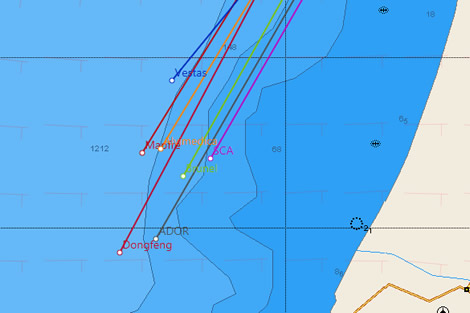
With the manoeuvring downwind the lead has changed a great deal. With Dongfeng Race Team and Abu Dhabi Ocean Racing led the charge towards Lanzarote yesterday, Team SCA did well, sailing slightly deeper than her competitors and briefly pulled into the lead as the fleet gybed back on to port. Similarly Dongfeng Race Team has done well over the course of this morning, setting up on the right side of the race track to edge into the lead, now holding an advantage of 2.8 miles over Abu Dhabi Ocean Racing.
Positions at 0940
| Pos | Boat | Lat | Long | DTL |
| 1 | Dongfeng | 27 12.71N | 13 46.50W | |
| 2 | ADOR | 27 13.93N | 13 42.83W | 2.83 |
| 3 | Mapfre | 27 21.56N | 13 44.27W | 8.46 |
| 4 | Brunel | 27 19.44N | 13 40.11W | 8.75 |
| 5 | Alvimedica | 27 21.86N | 13 42.41W | 9.63 |
| 6 | SCA | 27 21.02N | 13 37.37W | 11.42 |
| 7 | Vestas | 27 27.93N | 13 41.26W | 15.25 |
Weather-wise, the giant high continues to dominate the weather for the boats, now forming a giant NE-SW orientated sausage, its northernmost lobe encroaching over the Canaries. So, as has been the case for the last few days, the race course remains a narrow but now ever widening one between the African coast and the eastern perimeter of the high, where the winds get lighter and lighter. This limits tactical options, but the good news is that it means the boats are sailing pretty much along the great circle to their next turning mark of Fernando de Noronja.
The good news is that while at present the wind remains soft, although closer to 10 knots than the 5 knots shown in the GRIBs, the centre of the high is forecast to shift west out into the middle of the Atlantic and over the course of tomorrow there will finally the opportunity for the boats to get some westing in. While the northeasterly trades that the crews would expect to be sailing in at this point will fill in, that to the significant weather activity - hurricanes, etc - many miles to the north in the Atlantic the wind looks set to be shifting between the northeast and northwest over the week, but still with pressure.
The next tactical decision will be how to pass the Cape Verde islands still some 800 miles down the race track - sail through them or leave them to port?
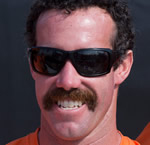 From Amory Ross, Team Alvimedica
From Amory Ross, Team Alvimedica
Today we went to school. Penthouse to the outhouse, we lost a ton of miles - heaps - and by and large everyone was very aware of it all the time. But the challenges of the last 24 hours are already being viewed as a chance to improve; that quality is going to be one of this team’s biggest assets moving forward.
Charlie has been keeping a sailing log, specific enough that after the crazy couple of cloud-driven, unpredictably random days of weather weirdness - conditions that reward patience and luck more so than your ability to physically sail a boat well through the water - he recorded his optimism: “Day four, happy to return to expected gradient sailing where we can start to actually sail the boat.” Charlie’s next log entry reads something along the lines of “And we’re extremely slow.”
Slow we were, but there were also some valuable lessons to learn about how we sail the boat (or rather: how we shouldn’t). That’s the beauty of one-design sailing: when you’re going slowly it probably means that you could be doing something more. And if you have the ability to understand what it is, and you make tangible changes to improve it, that’s all part of moving up the learning curve. And that’s exactly what happened. We abandoned the low and slow mode, we moved our weight forward, and we acknowledged the offshore lane wasn’t working.
This is a very long leg and no one is out of contention. There are still many obstacles on the way to Cape Town and these kinds of days, while tough at times to accept, they’re all part of the process. Team Alvimedica’s goal is to continue improving and I think this team is mindful that days like yesterday are a big part of that. No dramas!
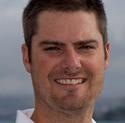 From Matt Knighton on board Abu Dhabi Ocean Racing:
From Matt Knighton on board Abu Dhabi Ocean Racing:
Always learning. It’s what we do. And we did a lot of it today. It’s remarkable how compressed the seven VO65s are at this point in the race. Race veterans can’t believe it. On-board Abu Dhabi Ocean Racing, the guys are just now starting their normal sleep rhythms after spending the first three nights of the race with no rest. Still, there’s little chance to relax when your competition is only a few miles away. Bright lights on the horizon.
One of those lights last night was Dongfeng Racing and at daybreak they were closing - fast. They clearly had some secrets to share in the light, downwind sailing arena.
Ian was at the helm and said to everyone, “Ok guys, remember this leg is the longest training run of your lives.”
The experience of the Abu Dhabi crew kicked into gear and paid out massive dividends. No bruised egos on-board, just brilliant offshore sailors focused on learning as much from that red boat as possible. Sail trim, daggerboards, sheeting angles, everything was absorbed. This is a level of competition previously unseen outside of one-design racing.
Watching Dongfeng with a careful eye, SiFi observed, “Sharing the same bit of ocean in the same conditions gives us a good opportunity to see what makes these boats go fast. It’s important we don’t get caught up in one battle and look at the bigger picture.”
As they overtook us, we could see one of the crew waving back at us in jest. Joke’s on you buddy. Viewing your boat from behind gives us the best view of how to learn from your setup and improve upon it. Score one point for Azzam.
By day’s end we had closed the gap back with Dongfeng and the latest telemetry confirmed, we were lower, faster, and gaining on them. Lesson learned.
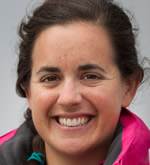 From Corinna Halloran on Team SCA:
From Corinna Halloran on Team SCA:
For years it was a subtle squeak of a hinge, and today it is a subtle computer chime. A few years back a robotic voice even announced it: “You’ve got mail.” Three simple words that can easily change your day; an unexpected letter, parcel, or postcard from a distant land, or an old friend just wanting to say "hello".
The excitement of mail arriving doesn’t change out here in the least. In fact, it’s probably amplified out here: 6,000nm from Cape Town and only 5 days out from Alicante on a 65 foot boat. Yesterday, Sophie came running out on deck and exclaimed: “I got mail!!” The email was four sentences long but her face beaming. “I didn’t expect anyone out here to email me, this is awesome,” she said.
“Now that things have settled down a bit, I’ve realized I’ve been so busy without a moment to sit in front of the computer and say hello,” Abby said. “I wish there was a way to communicate that I would love to receive an email—without emailing first.”
Abby’s situation is the norm out here though. Your body is syncing (or trying at least) to get into a rhythm: watch, eat, sleep, watch, and repeat. To take five minutes to write home, especially when it’s miserable out, can feel like an impossible task. Sleep usually wins, but it’s a known fact that receiving a note from home is the best cure for heinous weather conditions.
On land we take advantage of a text hello or a Facebook ping; phone calls are so easy and daily chat about what was for dinner or the garden is boring. But, offshore— now that is completely different. Personally, I’ve never loved more hearing about my dad’s garden and dinner plans! It’s a mental break for 30 seconds, and it is knowing there still is a world beyond our boat.
“I stare at seven little boats on a screen all day, so when I receive an email of encouragement, it makes it all worth it,” Libby our navigator explained. She’s right, we’re in a bubble out here, without Google, Facebook, nor Whatsapp; the only news we know is sent from our shore team—our link to the world.
Libby brought up another level of mail that all of us sailing on Team SCA are still getting used to: fan mail. Little comments from strangers telling us how excited they are for us is unbelievable. Hearing comments about people religiously following the team and our track with the Team SCA app is surreal. We hope your ‘command + R’ keys are still visible after this race!
“I’m in shock that I can make someone’s day with a good sailing maneuver,” Libby explained, “it’s an honour and I love it".

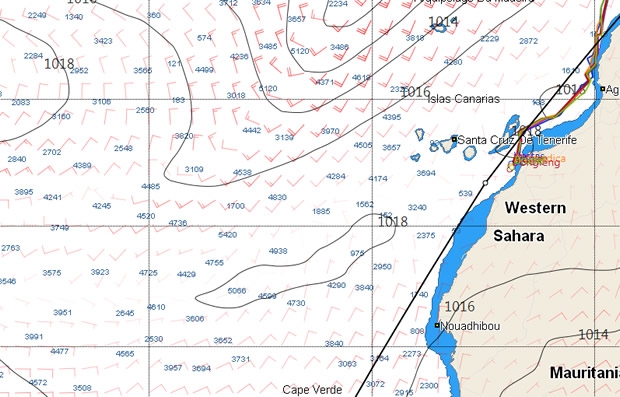









Latest Comments
Add a comment - Members log in